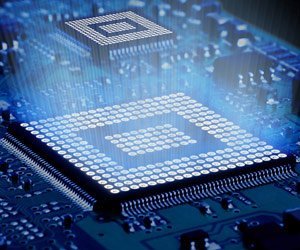Is artificial intelligence (AI) coming to take our jobs? That’s what a recent Forbes article posited, noting that it’s time for humans to have that conversation as to whether AI is friend or foe. But while think tanks ponder the coming of the Matrix, IT professionals and those in lines of business might be better served to think differently about AI—particularly about how it will help us do our jobs better.
AI and machine learning (ML) offer abilities far beyond human capabilities, but the most successful business teams don’t fear AI, they embrace it. Pundits say that a decade from now, 60 percent of jobs will be completely new—unheard of in the early years of the 21st century. That doesn’t mean the net number of jobs is going away, the jobs are just changing.
Take the automobile for example. One of the most visible uses of AI is apparent in today’s vehicles. When self-parking was introduced as a feature of the 2014 Jeep Cherokee, many of us heaved a sigh of relief. Parallel parking has been the bane of many a motorist, and now just five short years later, it’s common to see vehicles that will brake for you in an emergency, keep you in your lane when you get highway hypnosis on a long drive, or even take over navigation and drive for you. Does the driver feel threatened by these benefits? Hardly, based on automakers scrambling to add these and other AI-based technologies to cars in every price range. They just make driving more enjoyable.
So, when it comes to AI, why should work be any different than driving? In the workplace, AI can help by doing those repetitive, mundane, boring tasks we all do over and over again. Normally, workers spend time every day on stultifying tasks like approving expense reports, or just finding things—physical or data—for use by another person or department. Imagine that all of those time wasters could be automated by AI. Would your day not be more productive?
The digital workspace is evolving, as well, gaining intelligence that can suggest new applications based on data usage patterns, eliminate the need for swivel chair management between devices and applications, and even ensure the less digitally dexterous in the enterprise can focus on their abilities and let systems adapt to their use, rather than the other way around. But businesses must be cautious about deploying new technology as well—the more sophisticated systems become, the more opportunity for frustration as employees scramble to find information buried in feature-rich tools, causing a productivity gap of billions of dollars a year down the drain as workers search application after application for a piece of information needed to make a business decision. Here’s where AI-powered intelligent workspaces shine, by bringing together all the applications—SaaS, cloud, productivity, line-of-business—and all the data sources they depend on. There is only one place to look, one home for applications and utilities.
AI-powered intelligent workspaces help to address the productivity gap, as employees scramble just to find a piece of information they need in one of the dozens of applications that are in use daily. Here’s another way to look at our productivity—the assistant. Most high-level executives have their own assistants to arrange meetings, clear the calendar for urgent business matters, handle and file expenses so the executive can be more efficient. The fact is we could ALL benefit from an assistant, maybe not a human one, but an AI-powered system that can help us arrange our meetings, shuffle our calendar when the boss calls, turn pictures of receipts into an expense report, or automatically approve reports for subordinates if they adhere to company policies and are for a known event or incident. For example, if Larry’s calendar shows him flying to Dubuque for a sales call on the 17th, the expense report approval bot sees that and says, “Hey, Larry submitted this expense report and it looks like he was with a customer yesterday and the numbers are within our parameters, so I’m going to approve this for you.”
That kind of AI isn’t taking your job, it’s just freeing up all the time spent NOT working to make everyone more productive. And there are more benefits to be had: Once organizational workspaces are online, virtual assistants can see the bigger picture, have access to more information on what is happening in real time, and thus have a greater impact on productivity well into the future.

